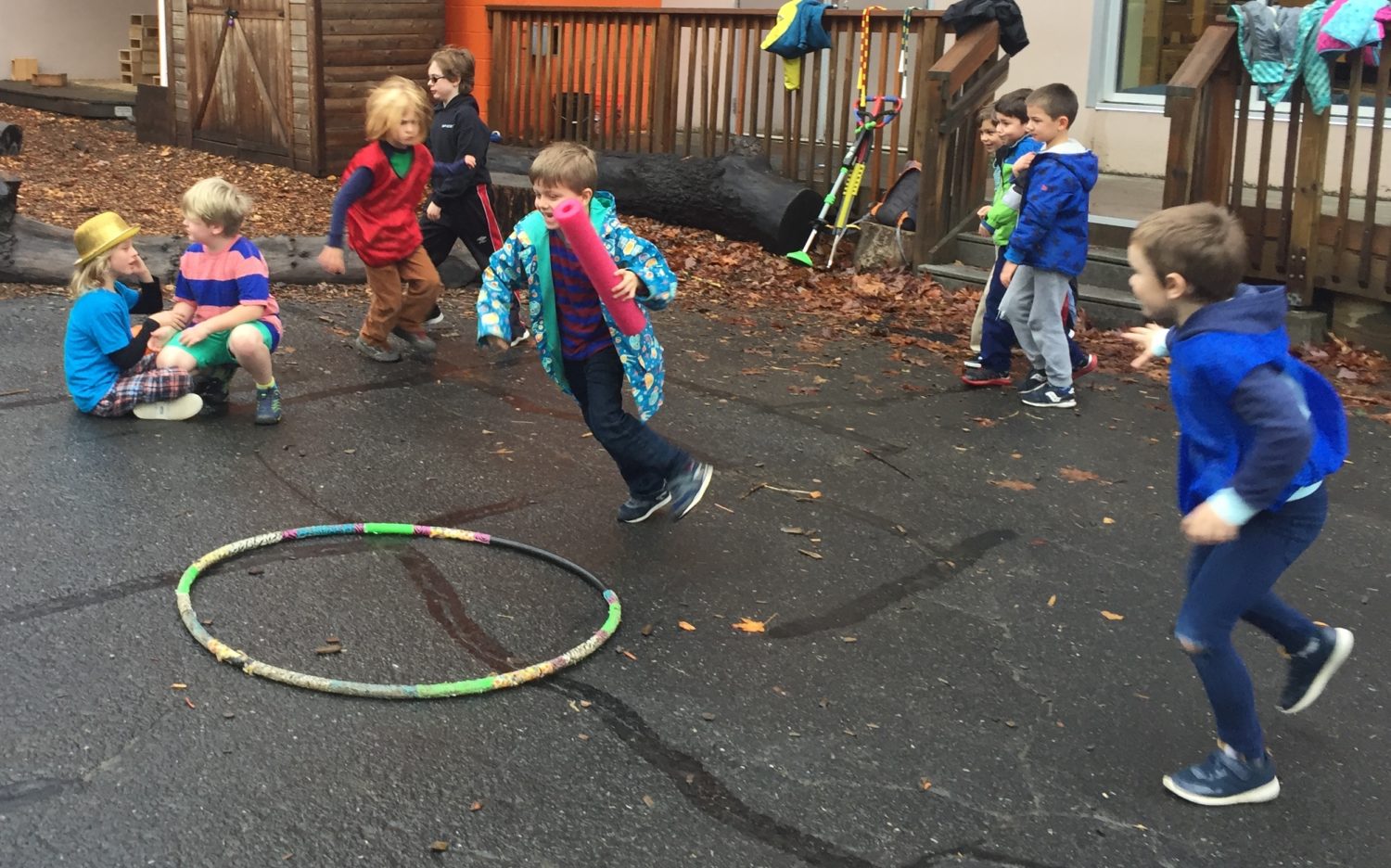Keeping space for creativity and inventiveness in PE

If developing creativity and inventiveness is a fundamental purpose of schooling, those dispositions need to be inspired throughout the day. In Story Workshop, children might be invited to use clay or collage materials to find their stories; in PE, we use movement and game systems. Children might have a basic game with one or two prescribed roles and a few basic rules – and they’ll seek opportunities to add characters and adjust the rules accordingly.
Recently, in the Dogwood classroom of first- and second-graders, we played a tag game with bees chasing butterflies. When a bee tags a butterfly, the butterfly must be rescued by two other butterflies and taken to a “butterfly hospital” (hula hoop) to recover. Immediately, children wanted to add a new character. One child suggested that this character might be a ladybug who helps the butterflies by tagging the bees. A bee who had not been tagged could rescue the tagged bee. We played and realized that when both bees were tagged by the ladybug, the game had to end. So the children set out to create new characters.
Bishop: There should be a person who can tag the ladybug.
September: And a wasp who can’t get tagged by the ladybug so it can rescue the bees.
Red: And the wasp can tag the butterflies too, only the wasp uses a dodgeball.
I asked, Can the person tag the bees and butterflies?
Jeff: Just the butterflies and the ladybug. The person can get tagged by the bees and wasp.
I asked, What happens when the ladybug gets tagged? We have a system for rescuing butterflies, but not the ladybug.
George: The ladybug has to be rescued by four butterflies and taken to the hospital.
At this point, we had a pretty complex game, so I sketched a diagram of who could tag whom on the whiteboard.
When we went out to play and choose roles, we had to pause occasionally to clarify the jobs each character had but, in general, the children were able to hold all of this information in their heads and busily went about tagging and rescuing each other. They were engaged completely, body and mind, in our complicated game.
Now, with nearly every game we play, children offer suggestions for new characters. We recently added a submarine to the Grump Island game that we have been playing for years.
Moving forward, I wonder what else children might begin to bring to games. How can I support them to use our outdoor games to develop the kind of thinking they are doing inside the classroom?
